Jiang Xue
An Accelerated Mixed Weighted-Unweighted MMSE Approach for MU-MIMO Beamforming
Oct 23, 2025Abstract:Precoding design based on weighted sum-rate (WSR) maximization is a fundamental problem in downlink multi-user multiple-input multiple-output (MU-MIMO) systems. While the weighted minimum mean-square error (WMMSE) algorithm is a standard solution, its high computational complexity--cubic in the number of base station antennas due to matrix inversions--hinders its application in latency-sensitive scenarios. To address this limitation, we propose a highly parallel algorithm based on a block coordinate descent framework. Our key innovation lies in updating the precoding matrix via block coordinate gradient descent, which avoids matrix inversions and relies solely on matrix multiplications, making it exceptionally amenable to GPU acceleration. We prove that the proposed algorithm converges to a stationary point of the WSR maximization problem. Furthermore, we introduce a two-stage warm-start strategy grounded in the sum mean-square error (MSE) minimization problem to accelerate convergence. We refer to our method as the Accelerated Mixed weighted-unweighted sum-MSE minimization (A-MMMSE) algorithm. Simulation results demonstrate that A-MMMSE matches the WSR performance of both conventional WMMSE and its enhanced variant, reduced-WMMSE, while achieving a substantial reduction in computational time across diverse system configurations.
Adaptive Implicit-Based Deep Learning Channel Estimation for 6G Communications
May 23, 2025Abstract:With the widespread deployment of fifth-generation (5G) wireless networks, research on sixth-generation (6G) technology is gaining momentum. Artificial Intelligence (AI) is anticipated to play a significant role in 6G, particularly through integration with the physical layer for tasks such as channel estimation. Considering resource limitations in real systems, the AI algorithm should be designed to have the ability to balance the accuracy and resource consumption according to the scenarios dynamically. However, conventional explicit multilayer-stacked Deep Learning (DL) models struggle to adapt due to their heavy reliance on the structure of deep neural networks. This article proposes an adaptive Implicit-layer DL Channel Estimation Network (ICENet) with a lightweight framework for vehicle-to-everything communications. This novel approach balances computational complexity and channel estimation accuracy by dynamically adjusting computational resources based on input data conditions, such as channel quality. Unlike explicit multilayer-stacked DL-based channel estimation models, ICENet offers a flexible framework, where specific requirements can be achieved by adaptively changing the number of iterations of the iterative layer. Meanwhile, ICENet requires less memory while maintaining high performance. The article concludes by highlighting open research challenges and promising future research directions.
Fast Capacity Estimation in Ultra-dense Wireless Networks with Random Interference
Aug 31, 2024Abstract:In wireless communication systems, the accurate and reliable evaluation of channel capacity is believed to be a fundamental and critical issue for terminals. However, with the rapid development of wireless technology, large-scale communication networks with significant random interference have emerged, resulting in extremely high computational costs for capacity calculation. In ultra-dense wireless networks with extremely large numbers of base stations (BSs) and users, we provide fast estimation methods for determining the capacity. We consider two scenarios according to the ratio of the number of users to the number of BSs, $\beta_m$. First, when $\beta_m\leq1$, the FIsher-Spiked Estimation (FISE) algorithm is proposed to determine the capacity by modeling the channel matrix with random interference as a Fisher matrix. Second, when $\beta_m>1$, based on a closed-form expression for capacity estimation requiring solely simple computations, we prove that this estimation stabilizes and remains invariant with increasing $\beta_m$. Our methods can guarantee high accuracy on capacity estimation with low complexity, which is faster than the existing methods. Furthermore, our approaches exhibit excellent generality, free of network area shapes, BS and user distributions, and sub-network locations. Extensive simulation experiments across various scenarios demonstrate the high accuracy and robustness of our methods.
A Hypernetwork Based Framework for Non-Stationary Channel Prediction
Jan 16, 2024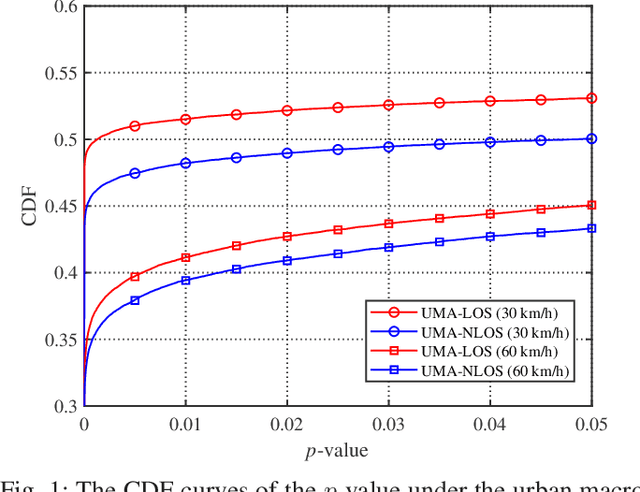
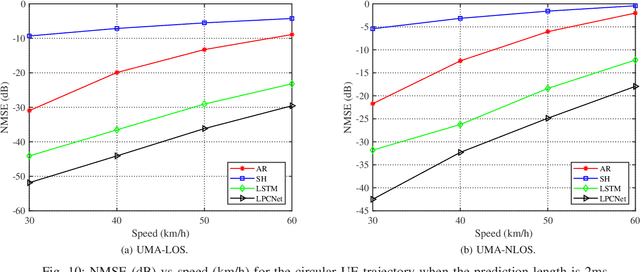
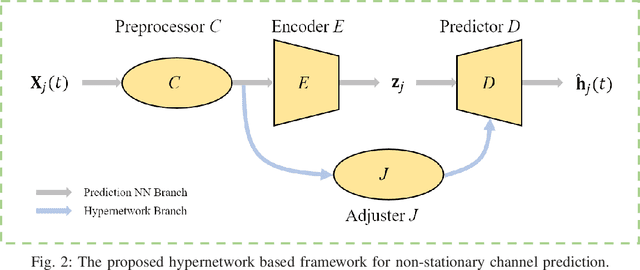
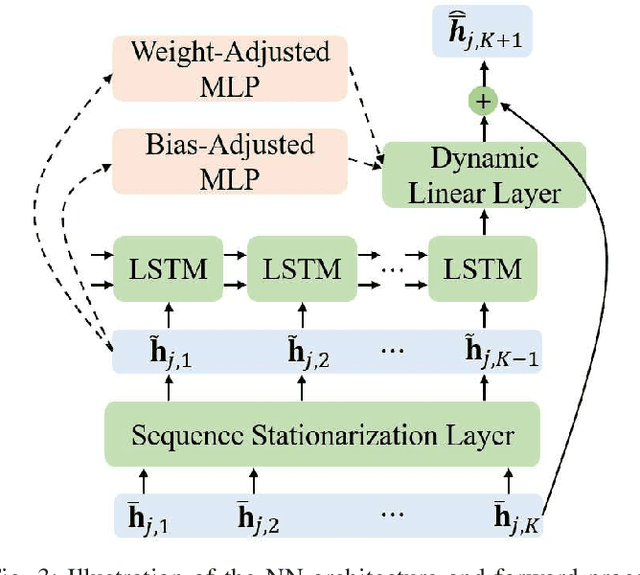
Abstract:In order to break through the development bottleneck of modern wireless communication networks, a critical issue is the out-of-date channel state information (CSI) in high mobility scenarios. In general, non-stationary CSI has statistical properties which vary with time, implying that the data distribution changes continuously over time. This temporal distribution shift behavior undermines the accurate channel prediction and it is still an open problem in the related literature. In this paper, a hypernetwork based framework is proposed for non-stationary channel prediction. The framework aims to dynamically update the neural network (NN) parameters as the wireless channel changes to automatically adapt to various input CSI distributions. Based on this framework, we focus on low-complexity hypernetwork design and present a deep learning (DL) based channel prediction method, termed as LPCNet, which improves the CSI prediction accuracy with acceptable complexity. Moreover, to maximize the achievable downlink spectral efficiency (SE), a joint channel prediction and beamforming (BF) method is developed, termed as JLPCNet, which seeks to predict the BF vector. Our numerical results showcase the effectiveness and flexibility of the proposed framework, and demonstrate the superior performance of LPCNet and JLPCNet in various scenarios for fixed and varying user speeds.
A Learnable Optimization and Regularization Approach to Massive MIMO CSI Feedback
Sep 30, 2022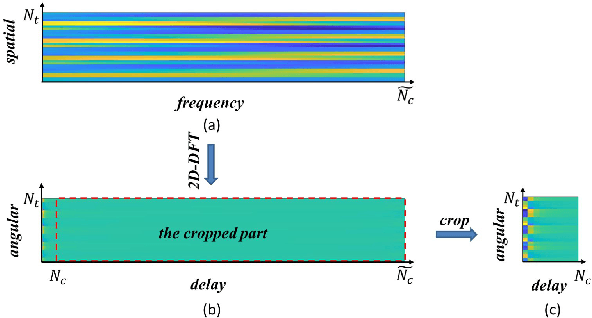
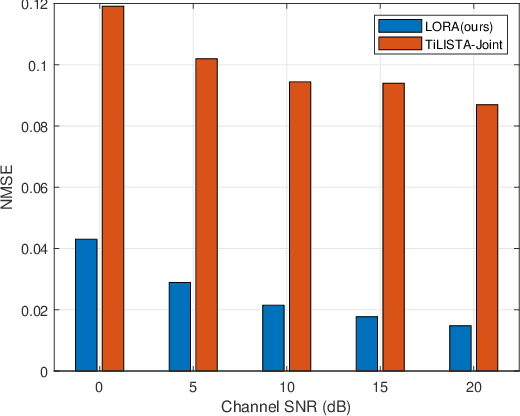
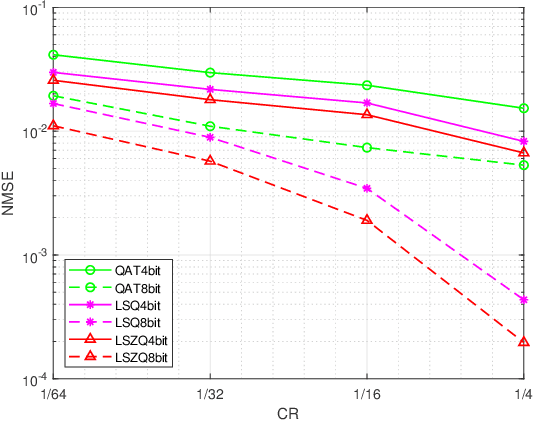
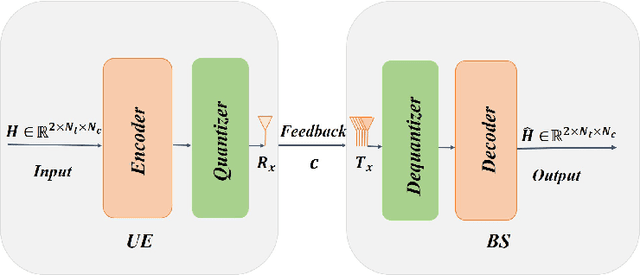
Abstract:Channel state information (CSI) plays a critical role in achieving the potential benefits of massive multiple input multiple output (MIMO) systems. In frequency division duplex (FDD) massive MIMO systems, the base station (BS) relies on sustained and accurate CSI feedback from the users. However, due to the large number of antennas and users being served in massive MIMO systems, feedback overhead can become a bottleneck. In this paper, we propose a model-driven deep learning method for CSI feedback, called learnable optimization and regularization algorithm (LORA). Instead of using l1-norm as the regularization term, a learnable regularization module is introduced in LORA to automatically adapt to the characteristics of CSI. We unfold the conventional iterative shrinkage-thresholding algorithm (ISTA) to a neural network and learn both the optimization process and regularization term by end-toend training. We show that LORA improves the CSI feedback accuracy and speed. Besides, a novel learnable quantization method and the corresponding training scheme are proposed, and it is shown that LORA can operate successfully at different bit rates, providing flexibility in terms of the CSI feedback overhead. Various realistic scenarios are considered to demonstrate the effectiveness and robustness of LORA through numerical simulations.
Federated Dynamic Neural Network for Deep MIMO Detection
Nov 24, 2021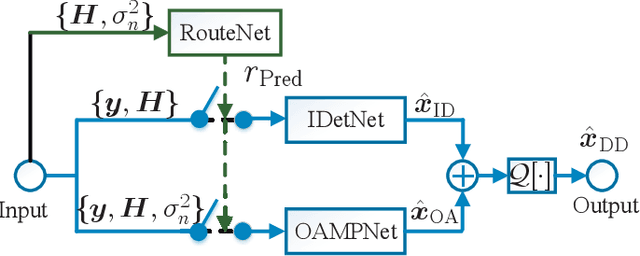


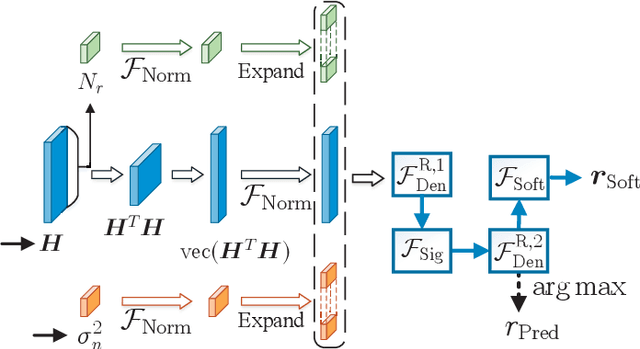
Abstract:In this paper, we develop a dynamic detection network (DDNet) based detector for multiple-input multiple-output (MIMO) systems. By constructing an improved DetNet (IDetNet) detector and the OAMPNet detector as two independent network branches, the DDNet detector performs sample-wise dynamic routing to adaptively select a better one between the IDetNet and the OAMPNet detectors for every samples under different system conditions. To avoid the prohibitive transmission overhead of dataset collection in centralized learning (CL), we propose the federated averaging (FedAve)-DDNet detector, where all raw data are kept at local clients and only locally trained model parameters are transmitted to the central server for aggregation. To further reduce the transmission overhead, we develop the federated gradient sparsification (FedGS)-DDNet detector by randomly sampling gradients with elaborately calculated probability when uploading gradients to the central server. Based on simulation results, the proposed DDNet detector consistently outperforms other detectors under all system conditions thanks to the sample-wise dynamic routing. Moreover, the federated DDNet detectors, especially the FedGS-DDNet detector, can reduce the transmission overhead by at least 25.7\% while maintaining satisfactory detection accuracy.
 Add to Chrome
Add to Chrome Add to Firefox
Add to Firefox Add to Edge
Add to Edge